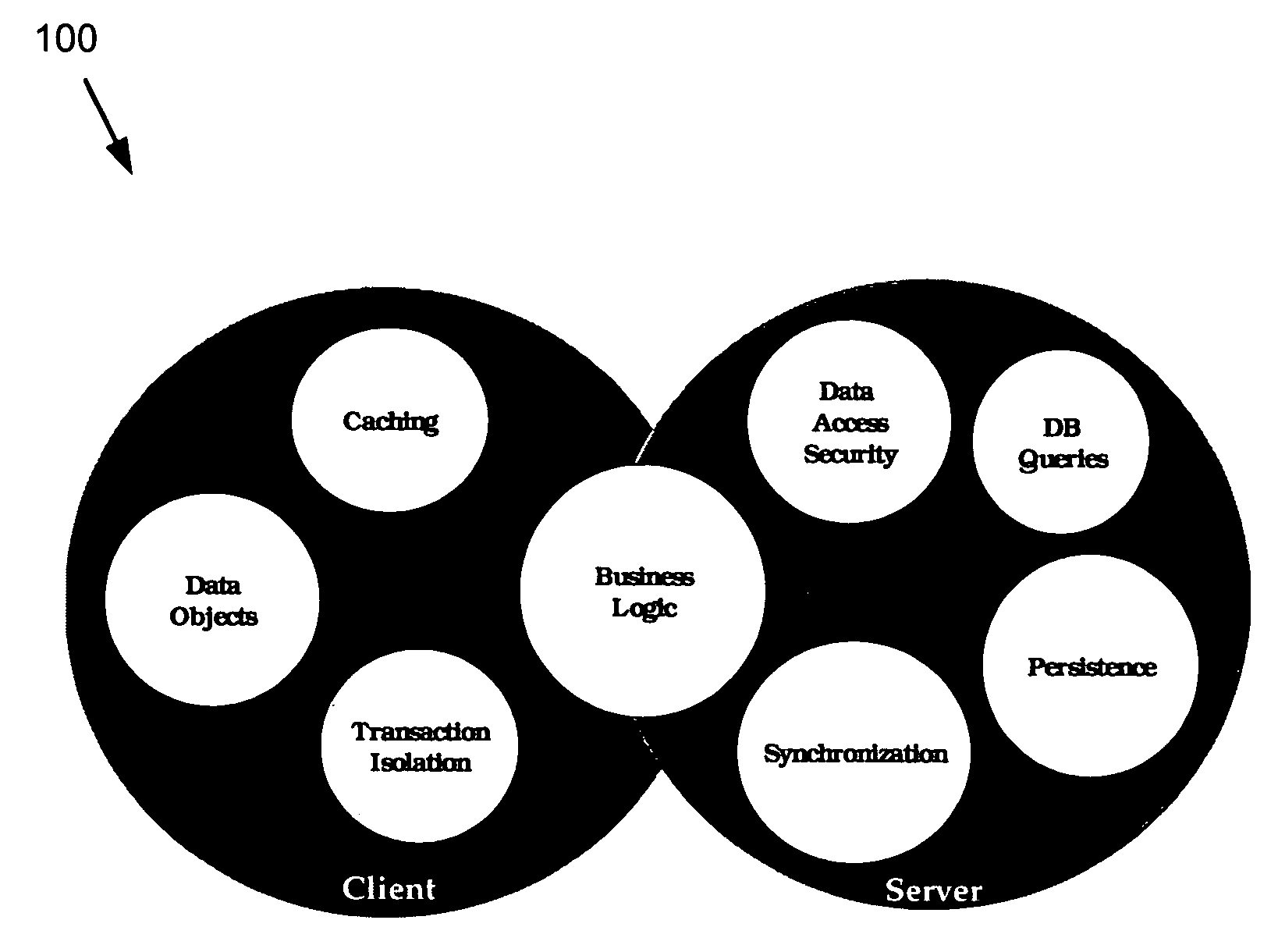Intelligent client architecture computer system and method
a client architecture and computer system technology, applied in the field of distributed processing computer systems, can solve the problems of complexities in managing the intelligent client architecture application, and achieve the effects of quick and easy authored and developed, friendly user interface, and fast and easy operation
- Summary
- Abstract
- Description
- Claims
- Application Information
AI Technical Summary
Benefits of technology
Problems solved by technology
Method used
Image
Examples
Embodiment Construction
[0030] The invention is described in detail with particular reference to certain preferred embodiments, but within the spirit and scope of the invention, it is not limited to such embodiments. It will be apparent to those of skill in the art that various features, variations, and modifications can be included or excluded, within the limits defined by the claims and the requirements of a particular use.
[0031] The following exemplary embodiment describes the data distribution and management process of the present invention in the context of a client-server business application use case. However, it should be understood that the present invention may also be used in embedded computing, grid computing, and other data and application architectures.
[0032] The present invention extends the functionality of current client-server architectures as well as those thin-client and n-Tier distributed computer applications by distributing data objects to the proper network nodes to support local ...
PUM
 Login to View More
Login to View More Abstract
Description
Claims
Application Information
 Login to View More
Login to View More - R&D
- Intellectual Property
- Life Sciences
- Materials
- Tech Scout
- Unparalleled Data Quality
- Higher Quality Content
- 60% Fewer Hallucinations
Browse by: Latest US Patents, China's latest patents, Technical Efficacy Thesaurus, Application Domain, Technology Topic, Popular Technical Reports.
© 2025 PatSnap. All rights reserved.Legal|Privacy policy|Modern Slavery Act Transparency Statement|Sitemap|About US| Contact US: help@patsnap.com



